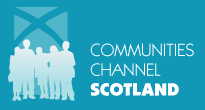The Child Poverty Act
/According to research, around one in four children in Scotland lives in poverty. The Scottish Government has put in place the following iniatives in order to try and address this.
Child Poverty Act
The Scottish Government introduced the Child Poverty Bill to the Scottish Parliament in February 2017. Following scrutiny the Bill was passed unanimously in the Scottish Parliament in November 2017, receiving Royal Assent in December 2017.
The Act sets out targets to reduce the number of children experiencing the effects of poverty by 2030.
The Child Poverty (Scotland) Act sets statutory targets which:
help focus efforts to tackle and ultimately eradicate child poverty
help monitor progress
are in line with the UN Convention on the Rights of the Child (UNCRC)
The targets state that by 2030, of children living in Scottish households:
less than 10% should be living in relative poverty (how many families are on low incomes compared with middle income households)
less than 5% should be living in absolute poverty (how many low income families are not seeing their living standards improving over time)
less than 5% should be living with combined low income and material deprivation (how many lower income families cannot afford basic necessities)
less than 5% should be living in persistent poverty (how many families live on low incomes three years out of four)
The Act also requires Scottish Ministers to publish child poverty delivery plans at regular intervals, with annual reports to measure progress.
The Act also establishes a statutory Poverty and Inequality Commission from 1 July 2019.
Child Poverty Delivery Plan
The Scottish Government published Every Child, Every Chance: the Tackling Child Poverty Delivery Plan 2018-22 in March 2018. The government sees this as a crucial step to delivering on its ambition to end child poverty, as laid out in the Child Poverty (Scotland) Act 2017.
The Plan, backed by a range of investment, including a £50 million Tackling Child Poverty Fund, sets out actions to increase household incomes, reduce costs, and support children to have a better quality of life.
Key actions include:
£12 million to provide intensive support to parents to help them move into, and progress within, employment; this is in addition to the £96 million committed to delivery of the new devolved employability service, Fair Start Scotland
a new minimum amount for School Clothing Grants; providing more money for school uniforms and sports kits
£1 million on new practical support for children experiencing food insecurity during school holidays
investing £3 million in a new Financial Health Check service to help low income families avoid the poverty premium of higher costs for essential goods and services and maximise their incomes
A further commitment is to bring forward a new Income Supplement for low income families, and the Scottish Government is considering the most effective means to deliver this.
Tackling child poverty as part of a wider strategy
The Child Poverty Act and ‘Every Child, Every Chance’ both stem from the Scottish Government Fairer Scotland Action Plan published in October 2016, which set out 50 actions to help tackle poverty, reduce inequality and build a fairer and more inclusive Scotland.
Other initiatives focused on children and young people which are referred to by the Action Plan include:
These are all designed to ensure that children's interests and rights are placed at the centre of policy considerations.

